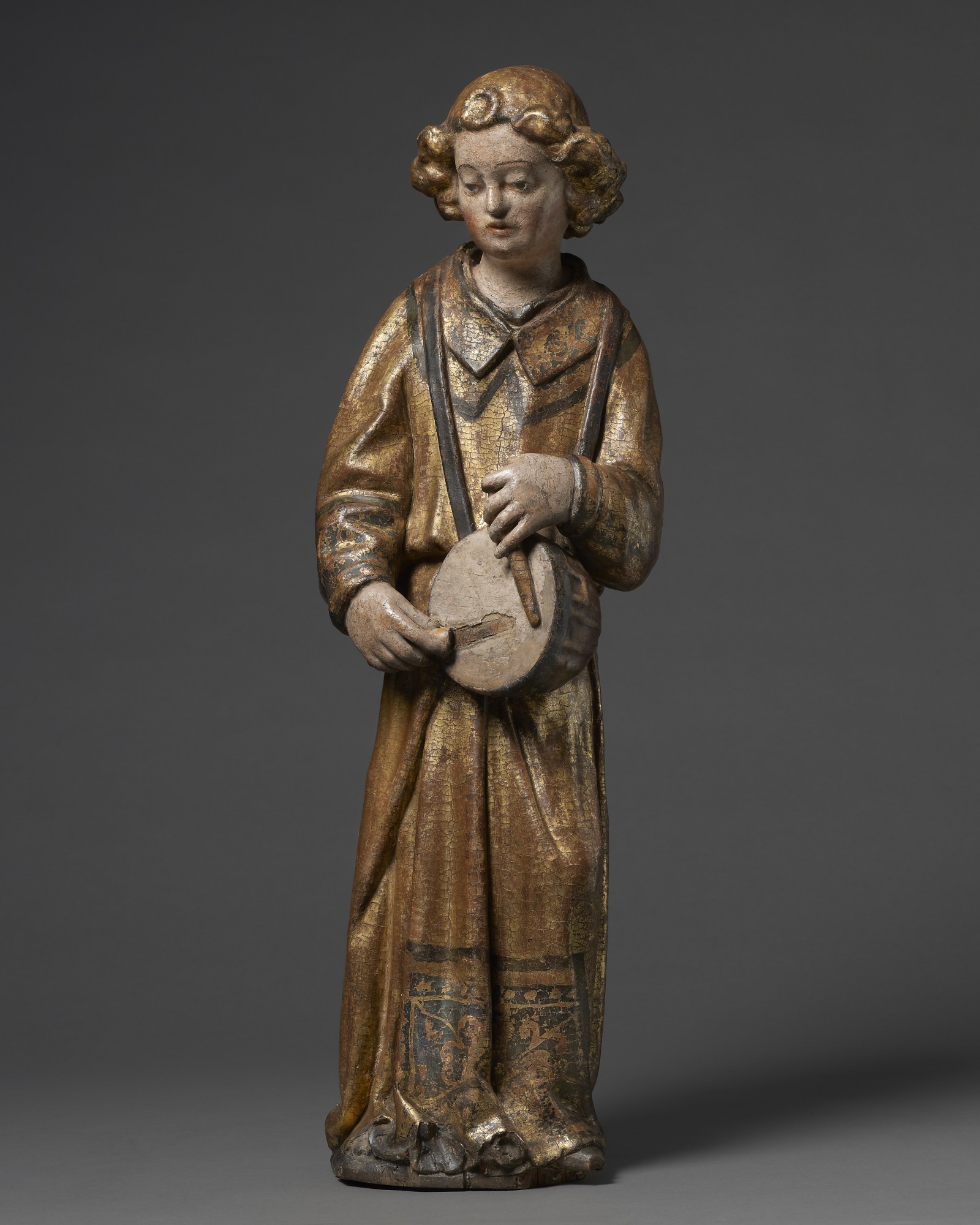


Private collection, Milan
With Longari Arte, Milan
With Daniel Katz Ltd, London
R. Casciaro, La scultura lignea lombarda del Rinascimento (Skira, Milano 2000), pp. 26-32, 256-257
F. Tasso, 'Milano, Pavia, Lodi: la scultura in legno nel ducato dei Visconti' in G. Romano and C. Salsi (eds.), Maestri della scultura in legno nel Ducato degli Sforza, exhibition catalogue (Milano, Castello Sforzesco, Sale Viscontee, 21 October 2005 – 29 January 2006), pp. 35-47
Dressed as a deacon, this enchanting angel, with the face and physique of a child, plays a tambourine, which hangs by a strap around his neck, with two sticks. The head, his face almost spherical with small delicate features, is framed by a circle of rich curls held in place by a band with circular buckle over his forehead. Save for the face and hands, the figure is covered entirely in gold leaf, preserved in the main in its original state. The body slender in form, the drapery of the tunic falls in fluid sinuous lines covering all but the toe of the left foot.
This charming sculpture may possibly have formed part of a group of musician angels decorating stalls or a singing gallery. Luca della Robbia's cantoria in the Museo dell'Opera del Duomo in Florence is a famous example of such a gallery respresenting a dancing and singing orchestra of angels. This work is reminiscent of a series of angel musicians crowning the choral stalls of the Basilica of Saint Ambrose in Milan created between 1469 and 1471 as the result of collaboration between the masters Giacomo da Torre, Lorenzo da Origgio and Giacomo Del Maino. It is similar also to another series which frames the choir of the Collegiate Church of Santa Maria della Scala in Chieri in Piedmont. Our sculpture is, however, larger than these comparable works. Its size and richer polychrome suggest that this angel was produced to form part of a Nativity scene, similar to that created by Pietro Alamanno for the Neapolitan Church of San Giovanni a Carbonara, now in the National Museum of San Martino in Naples. This angel is most closely connected stylistically to a pair of angels supporting candelabra once in the Church of the Annunciata in Macugnaga (Verbania), stolen in 1994. Although they are certainly by different hands and workshops, the Macugnaga angels share the same slight body form, the same minute features and heads framed by abundant curls, as well as the flowing sinuous drapery, still gothic in style, that tends to dematerialise the delicate features of the face. This is typical of late fifteenth century sculpture which would later shift towards stronger and more expressive lineaments.
Angelic themed works were popular in the Duchy of Milan and its territories and possessions throughout the fifteenth century, although very little Lombard wooden sculpture in particular survives from before the middle of the century. This wonderful object is a precious rare example of the craftsmanship of the region from the middle of the late Gothic period. In superb original condition and of the highest quality, it can be dated to around the middle of the fifteenth century.
SOLD: Private collection, France